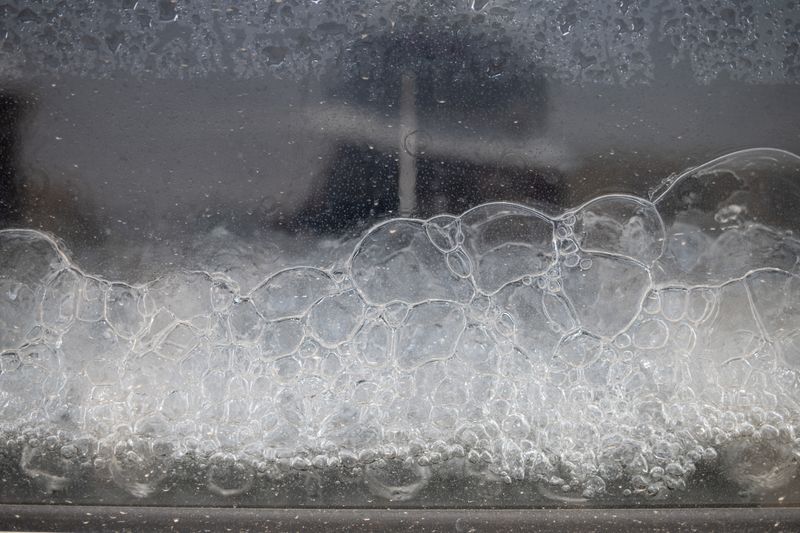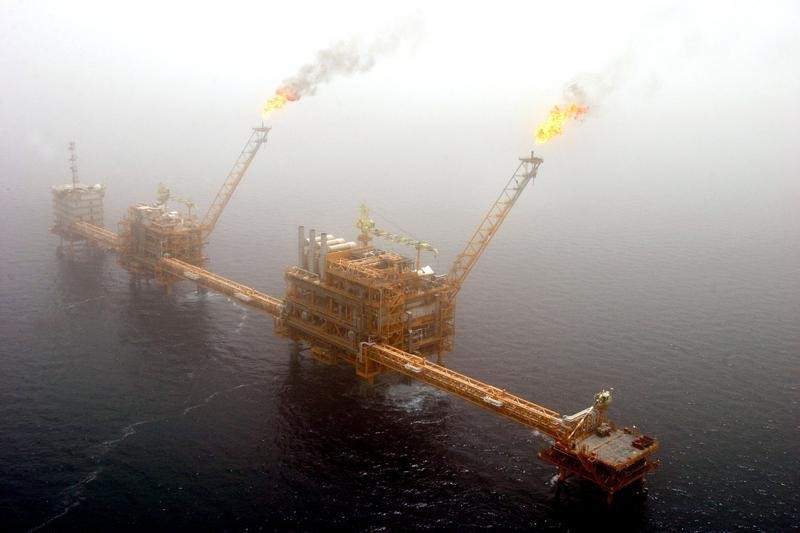By Valerie Volcovici
JAL, New Mexico (Reuters) – Stephen Aldridge flew in a four-seat helicopter over the desert landscape of southeastern New Mexico and could count a dozen man-made lagoons, chock full of toxic wastewater glistening among oil rigs and pump jacks.
Despite a growing problem of hazardous waste due to the region’s booming drilling industry, the mayor of the small town of Jal — located near the Texas border in the heart of America’s oil country — saw the dramatic scene as an opportunity: a source of water. in the second largest oil producing state suffering from worsening drought.
“Our future will depend on the future of that produced water,” he said.
Aldridge is among a growing group of New Mexico politicians who want the state to develop regulations that would allow the millions of gallons of so-called produced water that flow daily past the Permian Basin’s productive oil and gas to be treated and used instead thrown away. and encouraging companies to figure out how to make this happen cheaply, safely and at scale.
In 2022, New Mexico’s oil and gas industry produced enough toxic fracking water to cover 107,650 acres of land 12 inches deep. While the state’s drilling companies reuse more than 85% of their produced water in new oil and gas operations, the rest is pumped underground.
However, as injection wells fill up, New Mexico has begun limiting deep-underground disposal, which has led to earthquakes. The state is now expected to export more than 3 million barrels of that water per day by the end of 2024 — an odd dynamic in a water-scarce state.
About a dozen wastewater treatment companies in New Mexico are taking on the challenge under a state-backed pilot program that has so far boosted projects to grow crops like hemp and cotton and irrigate forage grasses in rangelands.
Although completed pilots have shown that the technology works, it is currently too expensive for large-scale deployment.
The companies and their supporters also face an uphill political battle. The debate over how to use this water is one of the most divisive political issues facing New Mexico, with opponents particularly concerned about unintended consequences for human health and subsidizing the oil industry’s waste problem.
New Mexico’s Democratic governor, Michelle Lujan Grisham, introduced legislation late last year that would have created a strategic water reserve from treated produced water. The bill was rejected by state lawmakers but will be brought up again during the next legislative session in January.
Neighboring Texas is also dealing with increasing problems around wastewater disposal, including an epidemic of exploding orphan wells as underground pressure increases, also raising concerns about a possible crackdown. The Permian Basin, which spans Texas and New Mexico, is the largest U.S. oil field.
“The point of criticism is now approaching,” says Rob Bruant of energy consultancy B3.
Other states such as Colorado and California already use treated produced water in small amounts for agriculture. But the situation in New Mexico is unique because the volumes are overwhelming and the water itself needs much more intensive treatment because it is unusually salty: three times saltier than the Pacific Ocean.
CRYSTAL CLEAR FISH TANKS
Aldridge stands out in dusty New Mexico, with shoulder-length white hair and a bushy beard, often dressed in brightly colored West African tunics.
His helicopter tour in late July was part of a site visit to one of the state’s wastewater treatment pilot projects, run by a company called Aris Water Solutions.
At the Aris project’s mobile trailer field office, Aldridge admired aquariums filled with crystal-clear water flowing through Aris’ treatment technology and housing about two dozen minnows.
However, before it is treated, the water is dangerous. On-site workers are required to wear flame-retardant clothing and carry portable monitors to detect deadly gases.
The raw water is brought in by local drilling companies and held in two large storage tanks before being passed through a membrane filter to remove solids and then distilled.
The process produces clear water and leaves behind a highly toxic, rust-colored sludge that is re-injected underground at a registered saltwater dump.
The water, Aris says, is free of pollutants or radionuclides and suitable for industrial and agricultural use. Starting next year, Aris will begin growing non-food crops such as cotton, as part of a $10 million grant it won this year from the U.S. Department of Energy.
“We are looking at the concept of desalinating produced water and creating a new water source for the Permian region in a similar way to how the water industry was able to demonstrate that municipal wastewater could be safely treated and used for many purposes so that society could feel comfortable with,” said Lisa Henthorne, chief scientist at Aris.
The biggest problem for Aris and others is cost. A barrel of treated water from Aris costs more than two dollars per barrel, many times higher than what users of industrial or agricultural water usually pay. Aris says the goal is to get the cost down to $1, which still means a big bill for users.
Massachusetts-based Zwitter, which recently completed a separate water treatment pilot project in New Mexico, said treated water may never be cheap, but could become viable if it becomes cheaper than disposal.
“It is unlikely that agriculture or other water users will be able to pay more than a cent per barrel. Therefore, the value of desalination will be determined by savings in disposal costs and could increase from $2 to $3/BW (per barrel of water) over time. the future,” it said in the final report on his project.
Currently, waste processing costs pennies per barrel, but that could increase as injection sites fill up and waste has to be transported or piped further and further.
Aris has strategic agreements with Permian oil companies, including Chevron (NYSE:), ConocoPhillips (NYSE:) and ExxonMobil (NYSE 🙂 to develop and test technologies for treating produced water for potential reuse.
Exxon subsidiary XTO is also working with Infinity Water Solutions, another water treatment company conducting a pilot project in the Permian.
“I can tell you that the H2O molecule has no value until it is gone,” Infinity CEO Michael Dyson added.
Afraid of getting it wrong
Avner Vengosh, a professor of environmental quality at Duke University, said unknown safety risks are also a major concern.
Under federal law, U.S. producers are not required to disclose all the chemicals they introduce into oil wells while drilling, raising concerns that water treatments and testing may be missing some dangerous components.
“There are many technologies that can treat the water, but the question is: how can we evaluate all the possible contaminants in produced water? I’m not saying it’s impossible, but I am saying it has to be done correctly,” he said.
Infinity’s Dyson agreed that the industry needs to be cautious.
“We know we only get one real chance to get this right, and I think most of us are terrified of getting it wrong,” he said.
The state’s environmental department is updating the 2019 Produced Water Act with the aim of tightening water reuse rules and expanding research and development for uses beyond the oil and gas sector.
During a week of hearings on the effort in early August, divisions were stark, with environmental groups and some scientists questioning how safe the final product could be.
Daniel Tso, a former member of the Navajo Nation Council, told Reuters that the Navajo had been stung before in New Mexico when decades of uranium mining on their lands over the past century led to widespread radioactive pollution.
“Now the industry is trying to make this a public issue and the public really needs to take a closer look at the impacts,” he said of produced water.
New Mexico Environment Secretary James Kenney told Reuters that technological advances over the past five years give him confidence that treated produced water can be safe, but he acknowledged New Mexico’s poor record.
“We need to recognize our history of things like uranium mining, the promise of wealth and the failure to protect health. So communities are right to be skeptical,” he said.
But for Aldridge, the more he learns about wastewater treatment technology, the more he’s willing to fight for the state to open up more uses for the water.
“Am I 100% convinced? No, but they are taking a step to convince me and I have to take those steps with them,” he said.
His own rural town of Jal, he said, could become home to “industries of the future” such as data centers or green hydrogen projects, businesses that need ample water supplies.

Or it could dry up, as the drilling industry will do when the Permian runs out of oil and gas.
“I just can’t accept the idea that small rural communities like Jal can just disappear.”




















